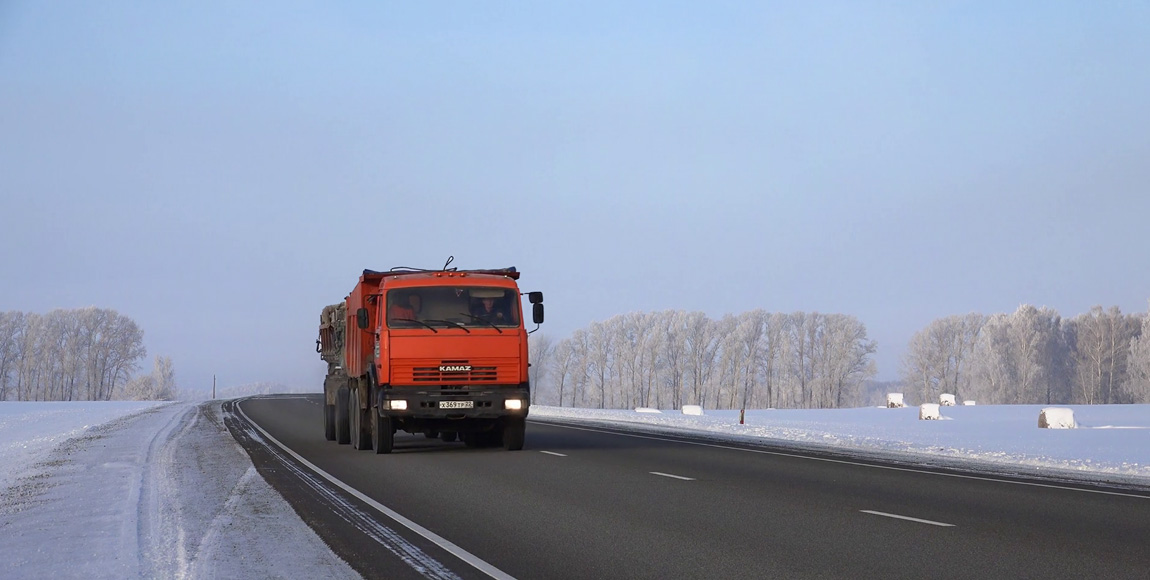More trade routes for Russia

Over the next six years, Russia aims to spend around R1,3 trillion on expanding and improving its transport infrastructure. MARISKA MORRIS takes a closer look
Although Russia is nearly 14-times larger than South Africa in its circumference, it has one of the lowest population densities in the world with only 8,4 people per square kilometre compared to South Africa, which has a population density of 44,7 people per square kilometre. With so few people in such a large country, it is not surprising that the transport infrastructure is a bit lacking – but not for much longer…
The Russian government has plans to invest 6,3-trillion rubles (R1,38 trillion) by 2024 in upgrading and expanding the country’s road infrastructure. The programme will include changes to highways, airports, railways and ports. The Severny airport in Grozny is expected to see renovations costing 15,7-billion rubles (R3,4 billion).
High-speed railway
One of the big projects planned with this investment is a high-speed railway line between Moscow and Saint Petersburg, which aims to halve the current railway travel time of four hours. Russian Economic Development Minister, Maxim Oreshkin, claims that with reduced railway travel time between these two cities, more people will opt for this mode of transport.
This, in turn, will take some of the pressure off the airports, as a flight between these two cities currently takes just over an hour. The new railway is expected to carry around 33-million people a year and cost around 1,13 trillion rubles (R248 billion) to construct.
The high-speed railway was originally planned to run from Moscow to Nizhny Novgorod, but Russian President Vladimir Putin ruled in favour of the route to Saint Petersburg, as it is expected to see more traffic and have the most significant impact on travel time.
Most expensive Russian road
At an estimated construction cost of about one-trillion rubles (R219 billion), the planned 80-km four-lane highway between Dzhubga and Sochi will be the most expensive road in Russia; however, it is desperately needed to reduce traffic in this region.
The current route between Dzhubga and Sochi is a single-lane road that takes close to four hours to travel in ideal conditions, although most drivers can expect a drive of about six hours or more.
The new highway will reduce the travel time, but it is also hoped that it will unlock the region as a potential tourist destination. The construction of the road will be expensive in part because of the mountains in the region. It will have around 26 tunnels and 32 bridges with construction to be completed by 2037.
While the Dzhubga to Sochi highway will be the newest addition to the Russian road network, there are still many projects that need to be finalised, such as the Moscow to Saint Petersburg route (M11) that will see another 141 km added this year. In 1999, Russia only had around 365 km of highway. In 2018, an additional 2 054 km of road networks were built with another 5 029 km expected by 2024.
New and better road networks in the cities are just as important as connecting the various regions of Russia; especially as both Moscow and Saint Petersburg are listed as some of the most congested cities. Moscow ranked first and Saint Petersburg ninth on the INRIX 2018 Global Traffic Scorecard.
In addition, some Russian cities have very poor public transport infrastructure. Mikhail Isayev, Mayor of Saratov, made headlines when his campaign urging residents to use public transport resulted in him arriving at work two hours late. He argued that this was a result of poor snow-clearing work.
Airport in north-eastern Russia upgraded
Chukotka is the far north-eastern region of Russia and is situated close to Alaska, in the United States. In fact, it is possible to swim the three kilometres between the two countries as Lynne Cox did in 1987. The region is very sparsely populated with only 643 km of road networks and no railways. Most people rely on air travel to access the region.
A budget of 3,4-billion rubles (R747 million) has been allocated to upgrade the airports in the region, as Chukotka is expected to become an economic hub with its natural resources such as oil, coal and gold. The region also recently received the first Russian floating nuclear heat power plant.
Beringovsky Port renovations
In addition to better airport facilities, the Chukotka region will also receive an investment of 1,25-billion rubles (R274 million) into its Beringovsky Port, which handles over 700 000 t of coal per year from the Nagornaya Mine. With the upgrades, the port will have the capacity to handle around 1,3-trillion tonnes of coal.
With a larger highway network, better rail and port infrastructure, transport operators in Russia will have more options to choose from when transporting goods across the vast country. There is also the opportunity to reduce transport costs and delivery time. With such big plans, it will be interesting to see how the future roads of Russia are paved.
Published by
Mariska Morris
focusmagsa




